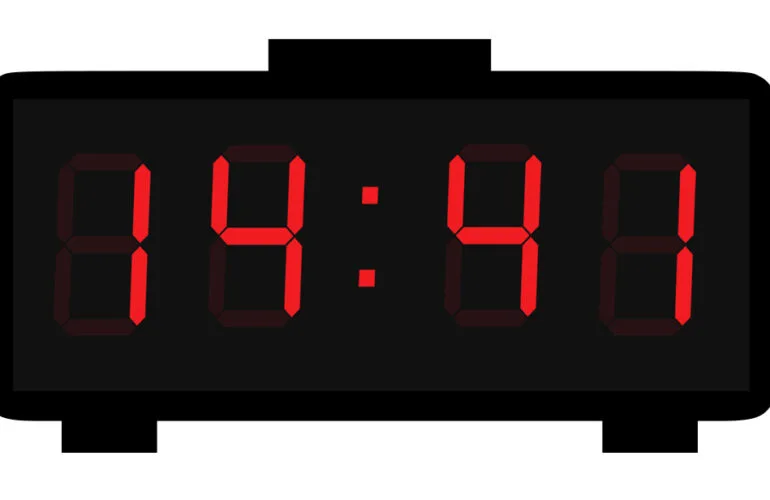Do you want to know what mirror number is and their examples? Here, you will get to learn what is an example of a mirror number and its characteristics.

In the world of mathematics, there are various intriguing concepts and phenomena that capture the attention of both students and professionals alike.
One such concept is mirror numbers. Mirror numbers, also known as palindromic numbers, exhibit a fascinating property that makes them stand out from other numerical sequences.
In this article, you will get to know the concept of mirror numbers and their characteristics.
What is an Example of a Mirror Number?

A mirror number is a numerical sequence that remains the same when its digits are reversed.
Furthermore, in simpler terms, it reads the same backward as forward. For example, 121, 454, and 888 are all mirror numbers. Also, these numbers exhibit a symmetrical pattern, which gives them their distinctive quality.
In addition, mirror numbers are not only intriguing but also hold a significant place in mathematical explorations and real-life applications.
The Characteristics of Mirror Numbers
Mirror numbers possess several characteristics that make them fascinating objects of study. Here are some of the characteristics of mirror numbers:
1. Symmetry at its Finest
Mirror numbers are the epitome of symmetry. Interestingly, when you reverse the digits of a mirror number, you obtain the same number.
Also, this symmetrical property gives mirror numbers a sense of balance and elegance. They stand as mathematical marvels that showcase the beauty and orderliness present in numerical sequences.
2. Infinite Possibilities
Mirror numbers are not limited to a specific range or set of digits. Also, they can be composed of any combination of digits, as long as the sequence remains the same when reversed.
Whether it’s a small two-digit number or a large multi-digit number, as long as the digits mirror each other, the number qualifies as a mirror number.
3. Palindromic Delights
Mirror numbers are also known as palindromic numbers. Interestingly, the term “palindrome” originates from the Greek words “palin” meaning “again” and “dromos” meaning “direction.” It refers to words, phrases, or numbers that read the same way backward as forward.
Also, mirror numbers perfectly embody this concept, enchanting mathematicians and enthusiasts with their palindromic delights.
Examples of Mirror Numbers

To further grasp the concept of mirror numbers, let’s explore a range of examples.
Furthermore, each example will demonstrate the symmetrical property of mirror numbers and showcase their diverse nature. Here are some examples of Mirror numbers and their meaning:
Mirror Number 121
This three-digit number reads the same from left to right as it does from right to left. In addition, the digit “1” acts as the mirror point, creating a symmetrical effect.
No matter how you approach this number, the result remains the same. It stands as a perfect representation of a mirror number.
Mirror Number 454
Another intriguing mirror number is 454. Like its predecessor, it exhibits the symmetrical property that defines mirror numbers.
In addition, the digits “4” and “5” serve as mirror points, forming a visually appealing pattern. Whether you start from the left or right, the sequence remains intact, solidifying its status as a mirror number.
Mirror Number 888
This number showcases the symmetrical property on a grander scale. Also, the digit “8” is repeated three times, creating a striking pattern that captivates the eye.
When reversed, the sequence retains its integrity, making it a prime example of a mirror number.
Mirror Number 12321
Mirror numbers can extend beyond repeated digits. A notable example is 12321. Although it appears to be a regular numerical sequence, it possesses the symmetrical characteristic of mirror numbers.
The digits “1,” “2,” and “3” form a symmetrical pattern that remains unchanged when read backward. This example demonstrates the versatility and richness of mirror numbers.
Mirror Number 1001
Mirror numbers can even incorporate zeroes. Take, for instance, the number 1001. Despite having a leading zero, it still qualifies as a mirror number. The digits “1” and “0” mirror each other, creating a harmonious balance within the sequence.
This example highlights that mirror numbers can possess diverse compositions and still maintain their symmetrical property.
In conclusion, mirror numbers are captivating numerical sequences that possess a symmetrical property, known as palindromic numbers. Furthermore, mirror numbers exhibit a sense of balance, elegance, and infinite possibilities.
Mirror numbers can be found in various contexts, ranging from simple two-digit numbers to complex multi-digit numbers. They hold significance in both mathematical explorations and real-life applications.
Related Searches:
